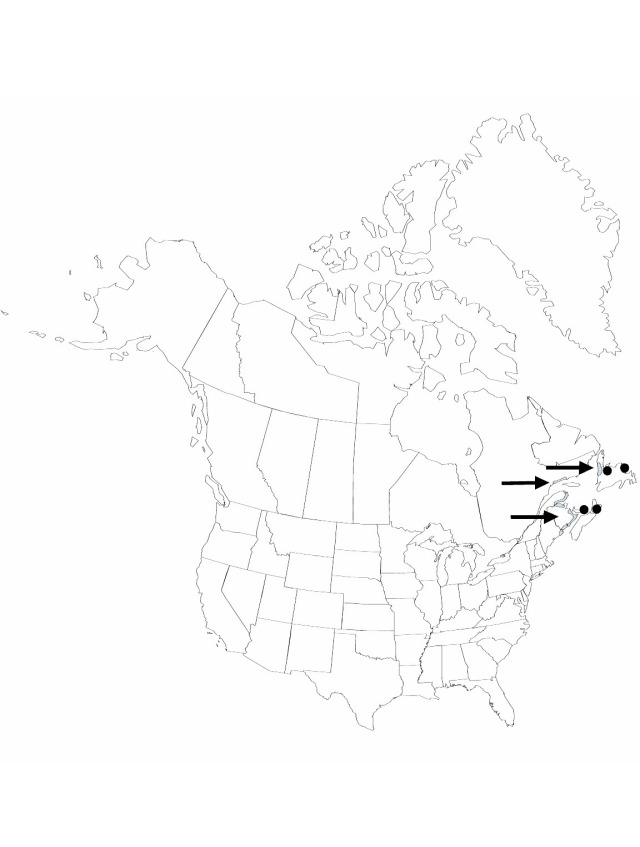Difference between revisions of "Triglochin gaspensis"
Canadian Journal of Botany 39: 1271, figs. 1, 2 Aa, 3, 4 Aa, 5 a, e, f, 6. 1961 (as gaspense).
FNA>Volume Importer |
FNA>Volume Importer |
(No difference)
| |
Revision as of 19:01, 24 September 2019
Plants with strands of old leaves at base, (5–)10–15(–20) cm. Leaves curving outward from sheath at 30–50° angle, slender, almost terete, equaling or slightly longer than scapes, (5–)10–15(–20) cm; sheath 12.5–21 × 1.8–3 mm, ligule often hoodlike, apically 2-lobed; blade 0.5–1 mm wide, apex acute. Inflorescences: scapes often purple near base, (5–)10–15(–20) cm × 0.5–1(–1.5) mm; thick; racemes (2–)3–5(–7) cm; pedicels 1.4–4 × 0.1 mm. Flowers: tepals somewhat rounded, 1.2–1.5 × 1.1–1.8 mm, apex obtuse; pistils (3–)6–(9–12), 6 fertile. Fruits: fruiting receptacle without wings; schizocarps linear, 3–4 × 1 mm; mericarps linear, weakly ridged, 3–4 × 1 mm, beak recurved, 0.9–1 mm. 2n = 96.
Phenology: Flowering summer (Jul–Aug).
Habitat: Tidal saltwater marshes, usually submerged daily
Elevation: 0 m
Distribution

N.B., Nfld. and Labr. (Nfld.), N.S., P.E.I., Que., Maine.
Discussion
Plants of Triglochin gaspensis tend to form lawnlike patches in contrast to the clumped habit of other northern species of the genus.
Of conservation concern.